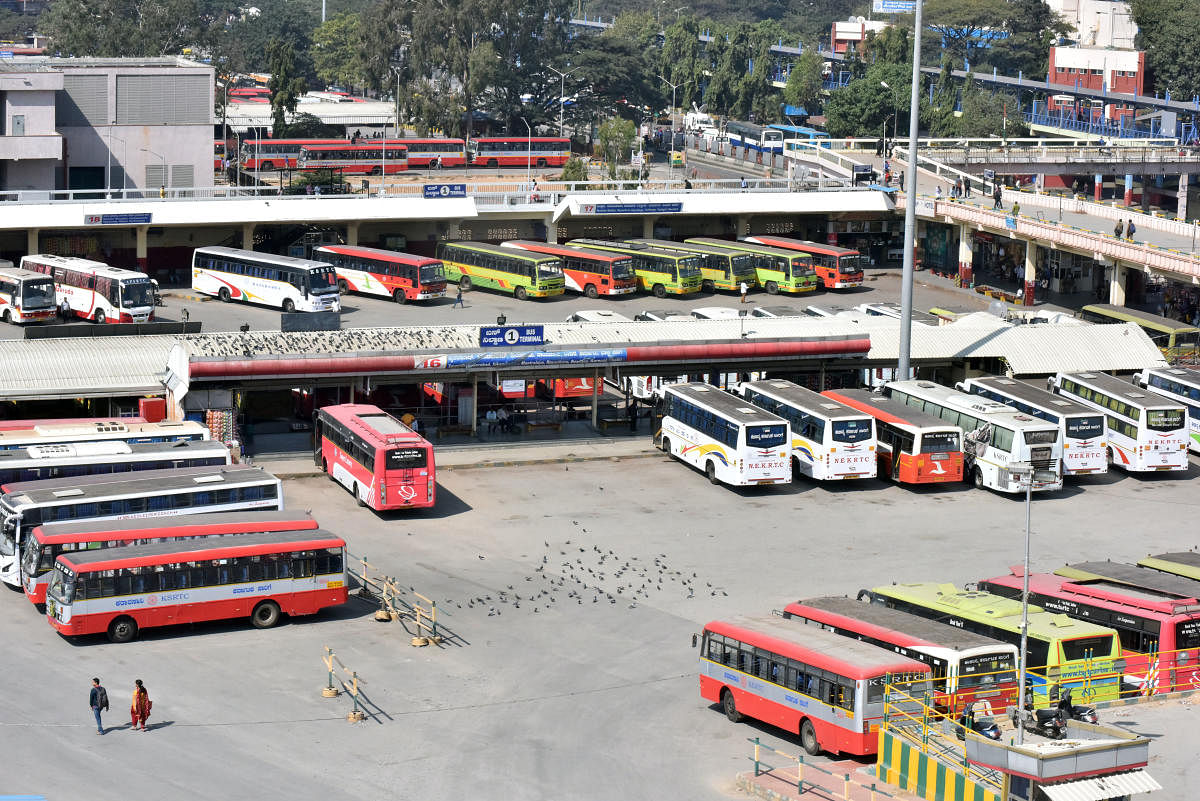
The bus terminus in Majestic, the city’s busiest transport hub, is celebrating its 50th anniversary, but the landscape there wasn’t always what we see today. A huge lake stood there just a few decades ago.
The Mysore government laid the foundation stone for a bus depot and a small terminus in 1964. The innovative, circular bus terminus for city buses came up only in 1980, when the ‘Majestic bus stand’ went through a metamorphosis to become one of the most prominent landmarks in Bengaluru.
While the present bus station — comprising the BMTC city bus terminus and the KSRTC terminus for intra-state and inter-state buses) is located conveniently just across the KSR City railway station, it must be remembered the sprawling built-up area was a water body just four decades ago.
The area became a playground when some parts of the centuries-old tank began drying up. The Congress organised a conference to pay tribute to Subhas Chandra Bose in the early 60s, and named the ground after him. The ‘Congress exhibition’, a huge carnival-like show, was among the events held there. Circuses also pitched tent there in the days they were not banned.
History tells us the lake is close to five centuries old. Kempegowda I built the Dharmabudhi Kalyani in 1537. It was called Dharmambudhi (‘dharma’ in Kannada means ‘donation’ and ‘ambudhi’ means ‘collection of water’).
The water was potable; it was considered a perennial source of drinking water for Bengaluru it was cleaned and repaired in the late 1890s according to an article in a website called Karnataka history. That was when a severe famine struck many parts of Mysore. Bengaluru was the biggest city in the princely province. The water body was a habitat for flora and fauna as well, and was just a stone’s throw from Kempegowda’s Bengaluru.
The Sampangi lake, on which the Kanteerava Stadium was built in 1997, was connected to the Dharmambudhi kalyani (a stepped well) via a main channel. This channel was diverted to create another lake, today’s Sankey, so that railway lines could be laid.
Gradually, the Dharmambudhi lake started drying up, and the landscape looked like a stretch of wetlands. The dry areas served as a pathway between the railway station and the city.
In later years, the authorities laid concrete on the wetland. You now see a Metro station there.
About half a million people ride on the Namma Metro every day, and the station here is where they change between its green and purple lines.
Dharmambudhi is just one of the many lakes in Bengaluru converted into bus stands, playgrounds and housing colonies.
The lake remains just a memory to the older generations. If only the authorities had saved even a part of it, you might have enjoyed a lovely sight as you board and alight at the terminus, or enter the Metro and railway stations.
Why save lakes?
Bengaluru is often gripped by water scarcity. A city that is home to nearly 1.2 crore people, with an annual growth rate of 4.04 per cent, can’t afford to be indifferent to water conservation.
The city has not been kind to its lakes. Bellandur lake, the largest in the city, has been abused so much it repeatedly catches fire. The lake has been frothing, too, giving the world an idea of the extent of pollution in the city.